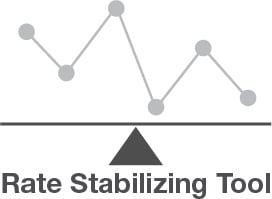Purpose
The Rate Stabilizing Tool (RST) is an ArcGIS-based tool that allows users to input their own record-level data to generate reliable, local-level age-standardized measures of chronic disease (e.g., prevalence, incidence, and mortality) or other population health outcomes. The RST is especially useful for estimating population health measures when the population or number of events is small.

Key features of the rate stabilizing tool
- Developed in response to increasing demand for small area measures of chronic disease.
- Uses Bayesian spatial smoothing models to generate robust small area estimates at the county and sub-county levels.
- Produces measures of statistical uncertainty (i.e., credible intervals) for each estimate that is generated.
- The current version of the RST uses previous versions of Esri products and the US Census Data API. The RST is in the process of being updated.
Acknowledgements
The RST was developed by the Children's Environmental Health Initiative, in partnership with the Centers for Disease Control and Prevention, the North Carolina Department of Health and Human Services, the Florida Department of Health, and the National Association of Chronic Disease Directors.
The Children's Environmental Health Initiative (CEHI) at Rice University is a research, education, and outreach program committed to fostering environments where all people can prosper. CEHI has developed, maintains, and offers an extensive fully spatially referenced data architecture on children's environmental health. This makes it possible to jointly consider diverse variables collected by different disciplines, creating the opportunity to explore and compare the different types of health components.
